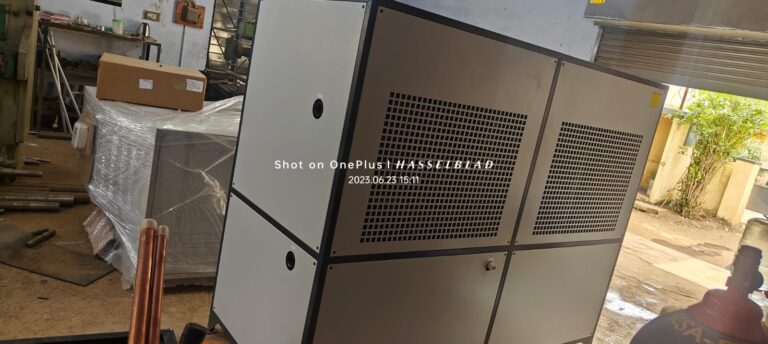Chiller Maintenance Tips for Laser Cooling Systems
Maintaining a chiller utilized in laser cooling systems is fundamental for guaranteeing ideal performance, reliability, and life span of both the chiller and the laser gear it supports. Here are a few maintenance tips particularly tailored for chiller units utilized in laser cooling systems:
Regular Inspection :
- Conduct schedule visual reviews of the chiller unit to check for signs of wear, leaks, corrosion, or damage to components such as hoses, fittings, valves, and the condenser coil.
- Inspect electrical associations, control boards, and security highlights to guarantee proper operation and compliance with safety standards.
Cleanliness :
- Keep the chiller unit and encompassing zone clean and free from dust, debris, and obstructions that can impede airflow and heat dissipation.
- Clean the condenser coil frequently to evacuate dirt, clean, and other contaminants that can decrease heat exchange effectiveness and increase energy utilization.
- Guarantee that air admissions and exhaust vents are unobstructed to encourage appropriate airflow and cooling.
Fluid Levels and Quality :
- Check coolant liquid levels frequently and best up as required to preserve proper levels and prevent air entrainment within the system.
- Monitor the condition of coolant liquid for signs of contamination, corruption, or chemical imbalance that will affect chiller execution or cause damage to laser hardware.
- Perform normal coolant liquid analysis and replace liquid as suggested by the chiller producer or based on liquid condition observing results.
Water Treatment :
- Implement a water treatment program to anticipate scale buildup, corrosion, and natural growth within the chiller system.
- Utilize water treatment chemicals, channels, and descaling agents as recommended by the chiller producer to maintain water quality and avoid fouling of heat exchanger surfaces.
- Monitor water quality parameters such as pH, conductivity, hardness, and microbial contamination levels and take corrective activity as required to guarantee appropriate water treatment.
Condenser and Evaporator Maintenance :
- Assess and clean the evaporator and condenser tubes or plates intermittently to remove scale, sediment, or biofilm buildup that can impede heat transfer efficiency.
- Utilize chemical descaling agents, high-pressure water flushing, or mechanical brushing to remove stubborn stores from heat exchanger surfaces.
- Guarantee that water stream rates and pressure drops over the evaporator and condenser are inside acceptable limits to optimize chiller performance.
Temperature and Pressure Monitoring :
- Monitor chiller inlet and outlet temperatures, liquid weights, flow rates, and other working parameters regularly to identify abnormalities or deviations from normal working conditions.
- Introduce temperature and pressure sensors, gauges, or transmitters to supply real-time observing and alerting of basic system parameters.
Scheduled Maintenance :
- Take after the manufacturer’s suggested maintenance plan and strategies for schedule inspection, oil, filter replacement, and component servicing.
- Keep detailed maintenance records, counting dates of benefit, support assignments performed, and any observed issues or abnormalities for reference and troubleshooting purposes.
By taking after these maintenance tips and executing a proactive maintenance program, you can maximize the reliability, productivity, and service life of the chiller unit in your laser cooling system, guaranteeing uninterrupted operation and ideal performance of your laser gear.


